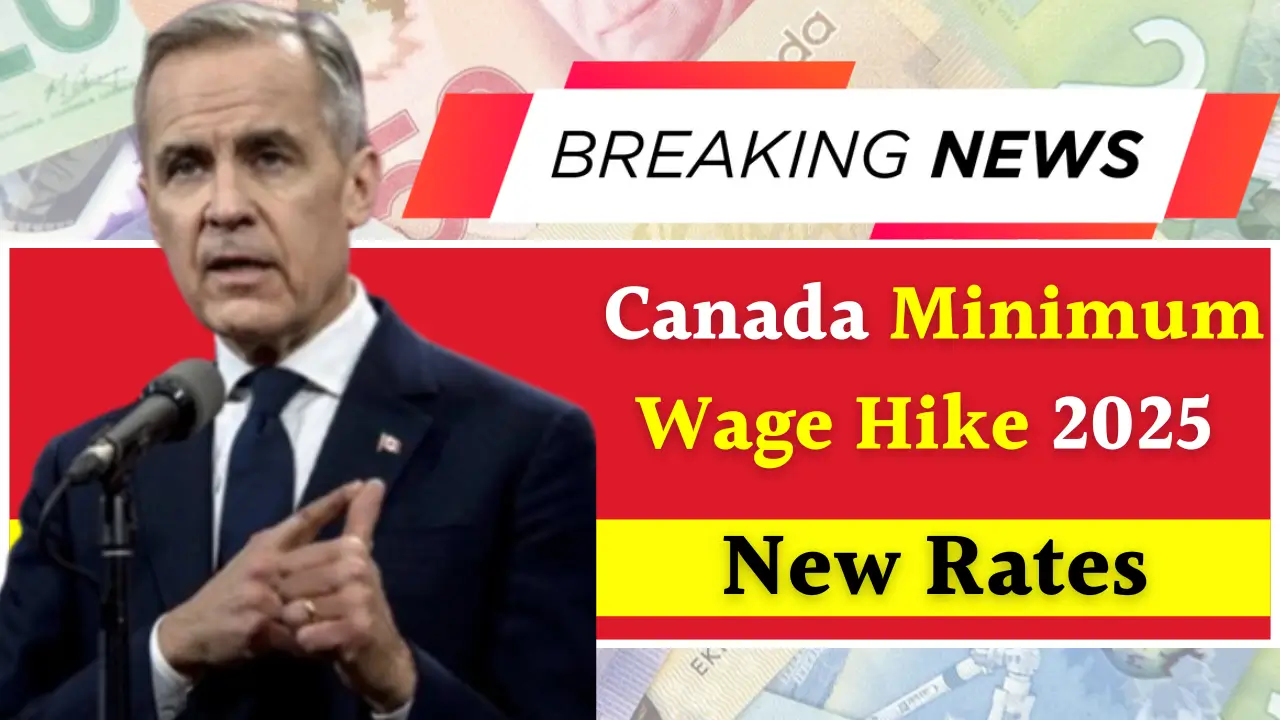Canada Minimum Wage Hike 2025: The Government of Canada has announced a significant rise in the federal minimum wage that takes effect in 2025. This adjustment has been implemented to provide better support for low-income workers, ensure fair compensation in response to inflation, and create more equitable employment opportunities across the provinces. With workers across various industries struggling to cope with rising living costs, the new wage increase will have a direct impact on millions of Canadians.
The minimum wage plays a vital role in securing the financial stability of workers, and the 2025 hike ensures that those earning the least are able to sustain themselves and their families with some measure of security. This article explains the new minimum wage rates for 2025, outlines eligibility criteria, provides key payment details, and analyses what this change means for both employees and employers.
Overview of Canada’s Minimum Wage Policy
In Canada, minimum wage is not a uniform rate across the country. Instead, it is set individually by each province and territory. However, the federal minimum wage is applied to workers in industries that fall under federal jurisdiction, such as banking, telecommunications, and air transportation.
Canada’s wage system is reviewed regularly to reflect economic growth, inflation rates, and the shifting cost of living. Over recent years, increasing concerns about affordability have led several provinces, along with the federal government, to raise their minimum wage levels. The year 2025 marks a significant push to ensure that workers are adequately compensated amid rising rent, food prices, and household expenses.
Canada Minimum Wage Hike 2025: Key Highlights
- Federal minimum wage increased effective 1 April 2025.
- Adjustments by provinces and territories taking place between April and October 2025.
- Pay rate changes align with Canada’s inflation trends and consumer price index (CPI).
- All eligible employees under federal and provincial law entitled to receive the revised pay.
- Employers required to comply, with penalties for non-adherence.
New Minimum Wage Rates in Canada 2025
The table below provides a breakdown of the updated minimum wage rates across provinces and territories in 2025.
| Province/Territory | Previous Wage (2024) | New Wage (2025) | Effective Date |
|---|---|---|---|
| Federal (Canada-wide) | CAD 16.65/hour | CAD 17.50/hour | 1 April 2025 |
| Ontario | CAD 16.55/hour | CAD 17.20/hour | 1 October 2025 |
| British Columbia | CAD 16.75/hour | CAD 17.40/hour | 1 June 2025 |
| Alberta | CAD 15.00/hour | CAD 15.50/hour | 1 September 2025 |
| Quebec | CAD 15.25/hour | CAD 15.75/hour | 1 May 2025 |
| Manitoba | CAD 15.30/hour | CAD 16.00/hour | 1 October 2025 |
| Saskatchewan | CAD 15.00/hour | CAD 15.60/hour | 1 October 2025 |
| Nova Scotia | CAD 15.20/hour | CAD 15.90/hour | 1 April 2025 |
| New Brunswick | CAD 15.30/hour | CAD 15.80/hour | 1 April 2025 |
| Prince Edward Island | CAD 15.40/hour | CAD 16.00/hour | 1 April 2025 |
| Newfoundland & Labrador | CAD 15.00/hour | CAD 15.60/hour | 1 April 2025 |
| Yukon | CAD 16.77/hour | CAD 17.25/hour | 1 April 2025 |
| Northwest Territories | CAD 16.05/hour | CAD 16.75/hour | 1 September 2025 |
| Nunavut | CAD 16.00/hour | CAD 16.75/hour | 1 April 2025 |
These new wage rates reflect gradual but steady increases across the country, ensuring workers in different regions benefit from a more equalised standard of pay.
Eligibility for Minimum Wage 2025
Eligibility for the revised minimum wage applies to most employees across both provincial and federal sectors. However, there are a few instances where exceptions may apply.
- Covered Workers: All employees under standard employment contracts, part-time staff, casual workers, and seasonal workers.
- Federal Jurisdiction Employees: Workers in banks, railways, airlines, postal services, and telecommunications industries will follow the federal wage of CAD 17.50/hour.
- Provincial Jurisdiction Employees: Those working in retail, construction, farming, hospitality, and other services are subject to their province’s revised minimum wage.
- Exemptions: In some provinces, student workers, liquor servers, and participants in training schemes may have slightly different scales, although many provinces are phasing out such variations.
Payment Dates and Implementation
The wage hikes in 2025 are being rolled out on fixed dates depending on each province and territory. Employers are legally required to update payroll systems on the scheduled dates. The following are the key payment terms:
- Federal minimum wage enforcement begins 1 April 2025.
- Provincial increases are applied on the specified dates listed in the table above.
- Revised wages must reflect in the first pay cycle following the effective date.
- Employees are entitled to back pay if employers delay implementation.
- Payments are regulated under the Canadian Labour Code and provincial labour laws.
Impact on Workers and Employers
The 2025 minimum wage hike is expected to positively impact over one million Canadian workers. For employees, this ensures better financial security, improved purchasing power, and the ability to meet growing household expenses. Young workers, women, and part-time employees will particularly benefit as they make up a significant portion of minimum wage earners.
On the employer side, while some small businesses may face higher labour costs, governments argue that wage increases boost productivity, reduce employee turnover, and contribute to overall economic stability. Additionally, by increasing workers’ disposable income, consumer spending could rise, which benefits local economies and small enterprises in the long run.
Regional Differences and Cost of Living
It is important to note that while minimum wage hikes provide some relief, differences in cost of living across Canada mean that the adequacy of the wage remains varied. For instance, living costs in Toronto, Vancouver, and Ottawa are considerably higher compared to smaller cities and rural areas. Several advocacy groups are pushing for the recognition of a “living wage” instead of a minimum wage, which more accurately reflects what workers actually need to live decently.
Future Outlook
The Canadian government continues to monitor inflation and cost trends, and there are projections for further wage adjustments by 2026. The focus remains not just on economic fairness but also on reducing poverty levels and supporting work-life balance through equitable compensation. By aligning wage increases with inflation data, Canada aims to bridge the gap between wages and real-life expenses.
Frequently Asked Questions (FAQs)
1. What is the new federal minimum wage in Canada in 2025?
The new federal minimum wage from 1 April 2025 is CAD 17.50 per hour.
2. Do provinces have different minimum wages in 2025?
Yes, each province and territory sets its own rate, ranging from CAD 15.50 to CAD 17.40 per hour in 2025.
3. Who is eligible to receive the new minimum wage?
All employees under federal and provincial laws, including part-time and full-time workers, are eligible except for certain exemptions like students or trainees in some provinces.
4. When will employees start receiving the new wages?
Employees will see updated rates in their first pay cycle after the provincial or federal effective dates in 2025.
5. What happens if employers fail to pay the increased wage?
Employers may face fines, penalties, and be required to pay owed wages retroactively to employees.
















